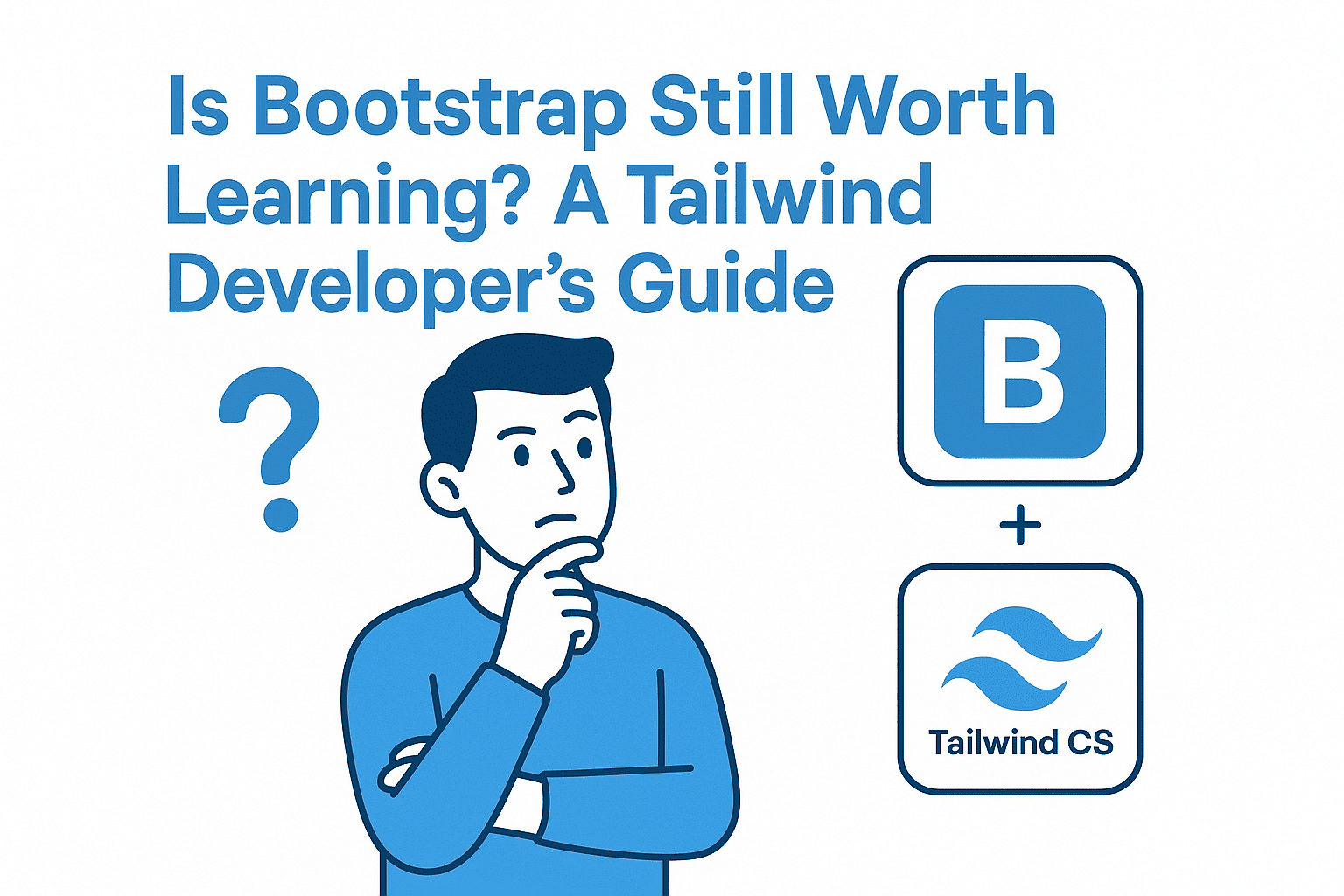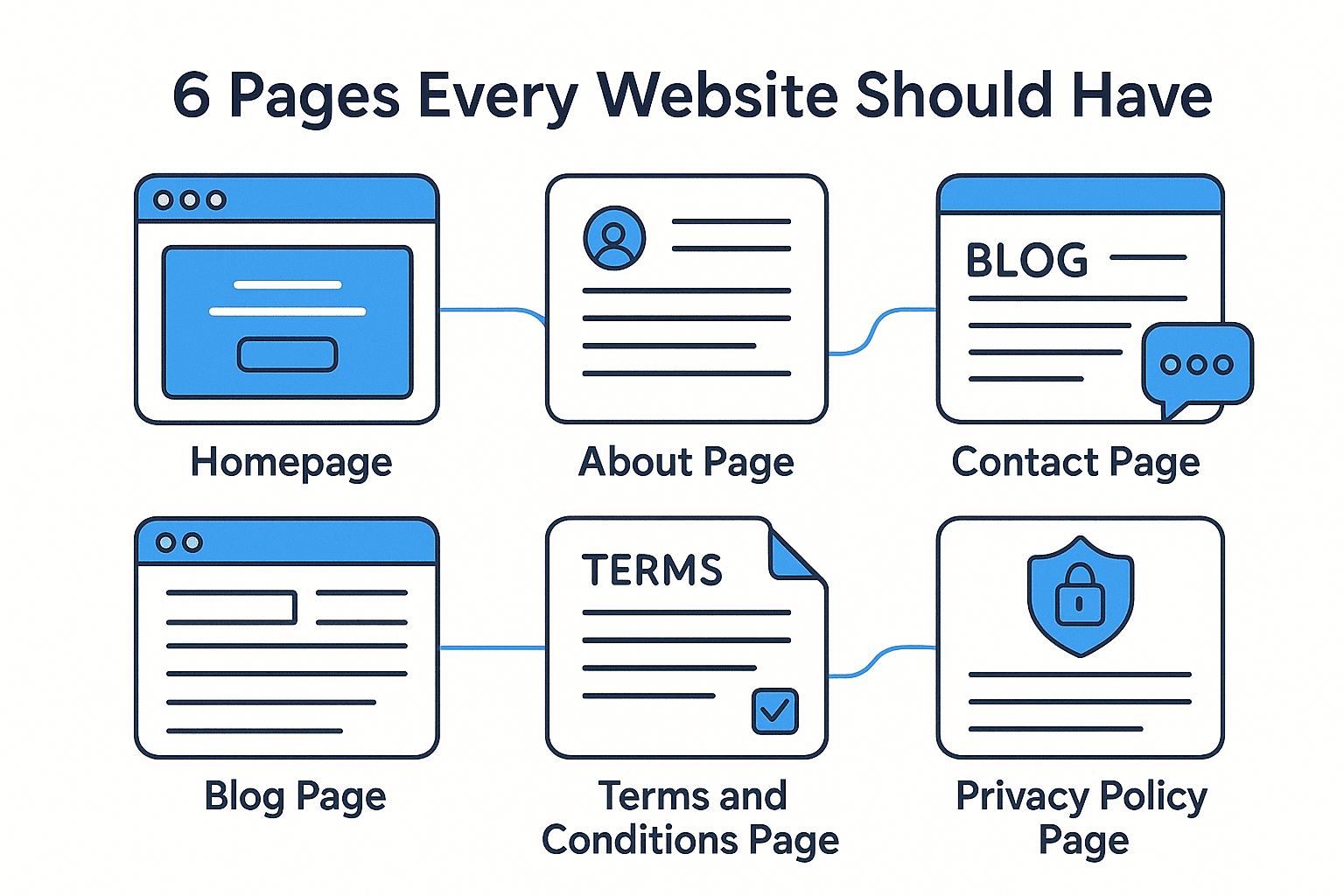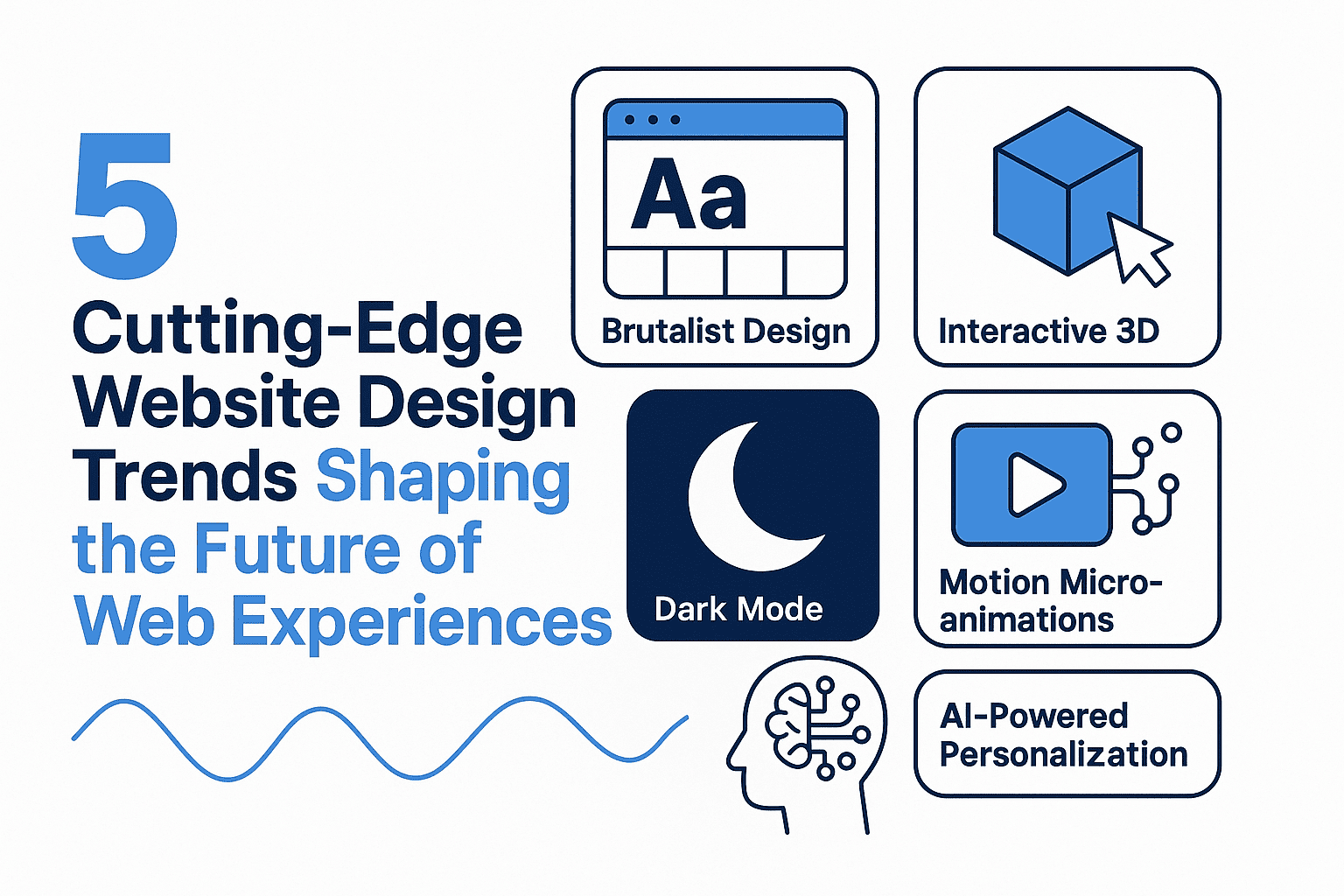When it comes to CSS frameworks, the debate between TailwindCSS and Bootstrap is as old as the internet itself. If you’ve already mastered Tailwind—its utility-first approach, scalability, and modern tooling—it might feel unnecessary to learn Bootstrap. But for certain projects or situations, Bootstrap still holds value. Let’s break down when it is worth learning, when it’s not, and how to decide based on your workflow.
🚀 When Bootstrap Is Worth Learning
Even with Tailwind’s rise, Bootstrap isn’t obsolete. In fact, it still has its place in specific scenarios:
1. Legacy Projects
Many older websites and applications still rely on Bootstrap, often due to its simplicity and the fact that it was once the go-to framework for rapid development. If you’re tasked with maintaining or updating these projects, knowing Bootstrap is a must. It’s also a common choice for enterprise clients who’ve built their systems on it over the years.
2. Client Work for Non-Tech Teams
Some clients—especially those in traditional industries or with limited tech knowledge—still prefer Bootstrap for its “out-of-the-box” components. Agencies or freelancers might need to adopt it to meet client expectations, especially if the budget or timeline doesn’t allow for custom solutions.
3. Quick Prototyping
Bootstrap’s prebuilt components (like modals, navbars, and cards) can speed up front-end development for MVPs or low-fidelity prototypes. If you need to spin up a working interface quickly without deep design work, Bootstrap’s built-in CSS can save time.
4. Team Environments with Established Standards
If your workplace or a client’s team has already adopted Bootstrap as their standard, you’ll need to learn it to collaborate effectively. Consistency across a team’s codebase often trumps personal preference, especially in large-scale projects.
❌ When Bootstrap Isn’t Necessary
If you’re already comfortable with Tailwind, consider whether Bootstrap adds value to your workflow. Here’s when it might be better to skip it:
1. Custom, Scalable Design Systems
Tailwind’s utility-first approach gives you granular control over every design decision, making it ideal for building reusable, scalable systems. If your project requires a tailored UI/UX with strict consistency (like a design system for an enterprise app), Bootstrap’s rigid structure might feel restrictive.
2. Modern SaaS or Web Apps
Many new teams in the SaaS space prefer utility-first frameworks like Tailwind (or even plain CSS) for their flexibility and performance. Bootstrap’s prebuilt components can lead to bloated code unless you use tools like CSS layering, tree-shaking, or PostCSS to strip out unused styles.
3. Avoiding CSS Bloat
Bootstrap’s global styles can add unnecessary weight to your project, especially if you’re not using its full feature set. While you can mitigate this with build tools, it requires extra configuration and maintenance—something that might not be worth the trade-off for lightweight apps.
🎯 Final Takeaways: What Should You Choose?
| Use Case | Recommendation |
|---|---|
| Greenfield projects (new apps) | Tailwind for flexibility and performance. |
| Legacy codebases or client work | Bootstrap for compatibility and speed. |
| Team collaboration with strict standards | Bootstrap if the team is already using it; else, adopt a unified design system. |
| Rapid prototyping | Bootstrap for quick wins, Tailwind for custom designs. |
| Modern JS stacks (React/Vue) | Tailwind’s component-based styling integrates seamlessly with these frameworks. |
🛠️ Final Thoughts: Learn Bootstrap, But Don’t Let It Define You
Bootstrap isn’t going away anytime soon, but it’s also not a one-size-fits-all solution. If you’re already fluent in Tailwind, you can treat Bootstrap more as a “last-resort” tool—something to learn just enough to work with existing projects or impress clients.
For freelancers and agencies, spending a weekend learning Bootstrap’s core components can open doors to new opportunities. For developers building modern, scalable applications, Tailwind remains the more powerful and future-proof choice.
In the end, the best framework is the one that fits your project’s needs and your workflow. Don’t let the debate between Tailwind and Bootstrap hold you back—choose what works for your goals.
🚀 Let’s build something amazing! If you have a project in mind or need help with your next design system, feel free to reach out.
📧 Email: safi.abdulkader@gmail.com | 💻 LinkedIn: @abdulkader-safi | 📱 Instagram: @abdulkader.safi | 🏢 DSRPT
Drop me a line, I’m always happy to collaborate! 🚀



